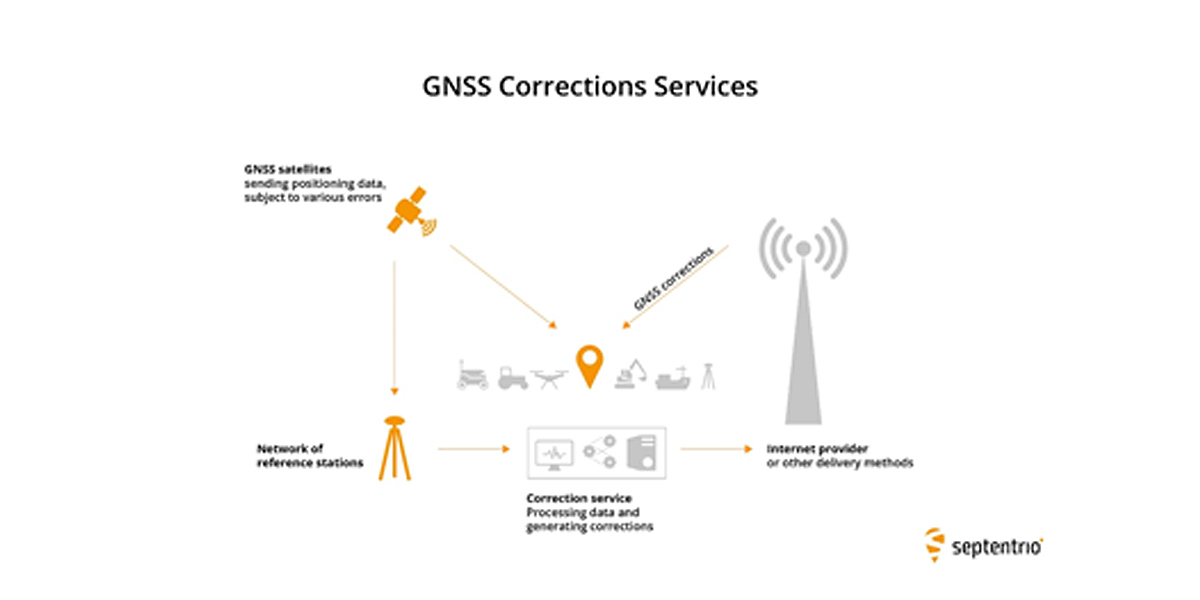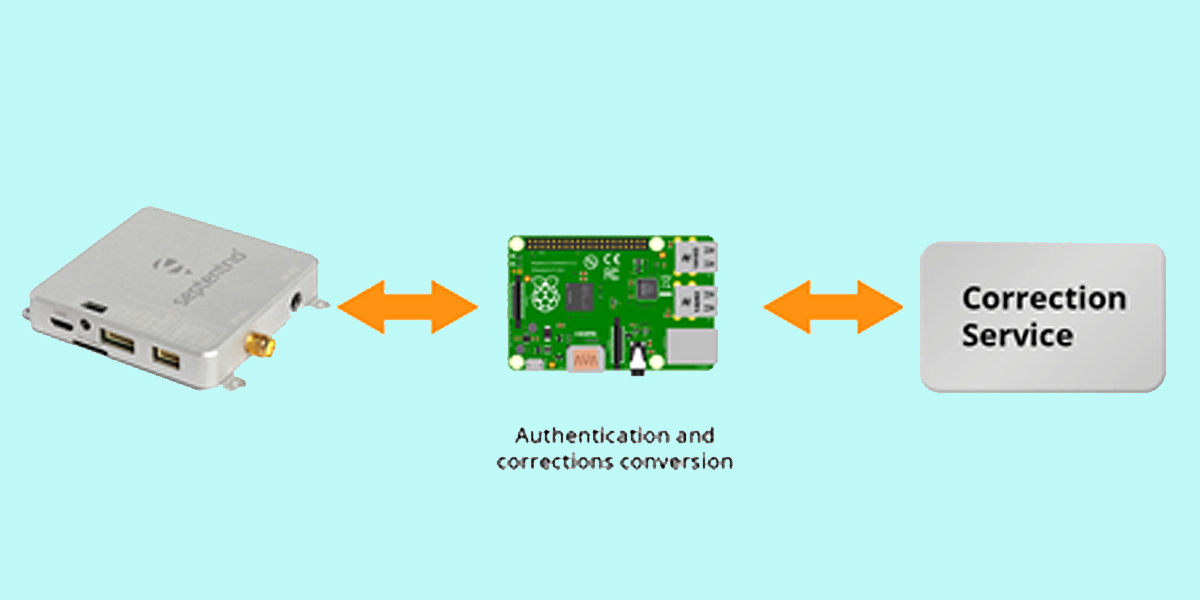What are GNSS corrections and how to integrate services that work best for you

The demand for high accuracy positioning is growing and spreading from automation and robotization to lawn mowers and other mass market devices. This is driving new developments in the GNSS ecosystem, as new correction services and models emerge to satisfy demands of various industries. These services vary in terms of accuracy offered, delivery methods, coverage, and business model. The GNSS corrections ecosystem is currently in a state of the “Wild West” with lots of possibilities, but little standardization, making it challenging for users to select and connect to the most suitable service.
The Agnostic Corrections Partner Program has been created to serve as a bridge between the customer, the receiver and the correction services, allowing integrators to take advantage of reliable high-accuracy receivers in combination with the best suitable correction service.
But what exactly are correction services and how do they fit into the puzzle of system design for machine automation, robotics and many other applications using high-accuracy positioning? Satellite-based positioning is inherently limited in accuracy due to several errors caused by GNSS satellites.
As GNSS signals travel towards the Earth, the atmosphere causes tiny delays which result in additional errors, further degrading accuracy down to several meters. To compensate for these errors and achieve decimeter or even centimeter-level accuracy the receiver needs to get external information from a base station or a corrections service. This is also called positioning augmentation, or augmented accuracy.
In addition to the widely accepted RTK centimeter-level positioning, there has been an expansion in the market of affordable PPP-RTK (aka SSR) corrections, which provide continental coverage, sub-decimeter accuracy and a fast convergence rate, delivered over internet or satellite. For more information about how correction services work and PPP-RTK corrections see GNSS Correction Demystified.

New correction services on the rise
Traditionally, to get GNSS corrections users have connected to either their own private network of RTK base stations, government networks or a correction service tied to their receiver manufacturer. Today new services are gaining popularity in the market which are open to connect to various receivers and new, innovative and more affordable business models are appearing on the horizon.
Unlike broadcasting (L-band), correction delivery over internet allows connection checks so that providers can keep track of service usage. This is giving rise to pay-per-use service subscription models, which work in a similar way to mobile phone plans. In some regions free-of-charge PPP-SSR services are becoming available such as CLAS, which is now operational in Japan, and the European HAS (High Accuracy Service).
Inspired by the blockchain mining economy, some companies have found a new approach of providing corrections by allowing users to setup corrections base stations at their home or office. This results in a community-powered, shared network, which has a potential for a very high density.
Locking receiver to service, no more the norm
As the footprint of correction providers grows, there is an increase in the number of services which are not bound to the receiver, and the classical model of locking receiver to a particular correction service is receding. This results in a large service offering on the market, with variable parameters in term of:
• Accuracy: from the centimeter accurate RTK to the sub-decimeter PPP-RTK
• Coverage: local, continental or global access to corrections
• Delivery: allows the receiver to get corrections via internet or L-band satellite, however protocols and formats vary from provider to provider
• Business model: subscriptions such as prepaid, pay-per-use, fleet-contract or receiver bundles are available at varying costs, with telecom networks offering packages of corrections bundled with other value-added services

Lack of standardization is a hurdle
Various service providers use different correction formats as well as protocols and there is no standardization yet to consolidate the various delivery mechanisms. This makes it challenging for users to receive, decode and start using the corrections data. For internet communication NTRIP (specifically for GNSS), MQTT (IoT) or even custom protocols are being used. There is also variability in the data format of the corrections themselves with flavours like SSRZ, SSRC and SPARTN in addition to the standard SSR (PPP-RTK) and RTK corrections.
Agnostic Corrections Program offers the best of both worlds
To help you find your way in the growing maze of correction offerings and to facilitate the integration of the right service into the system, Septentrio established the Agnostic Corrections Partner Program. This program offers the flexibility for GNSS users to select the service which best suits their system requirement and to easily connect it to a receiver with a high degree of positioning reliability and availability. The Agnostic Corrections Program offers the following 4 advantages:
1. Bridges the challenges and complexities posed by various interfaces, protocols and formats between service providers
2. Provides documentation and open-source sample libraries on GitHub for easy connection to the service of choice
3. Establishes long-term partnerships between Septentrio and service providers ensuring continuous support, up-to date documentation and stability
4. Enables connection of services to high-performance GNSS receivers, known for positioning availability and reliability due to a high degree of security and resilience against GNSS jamming and spoofing
Currently the Agnostic Corrections Partner Program already includes Polaris from Point One, Skylark from Swift Navigation and PointPerfect from u-blox.
Connecting to the best service with a Correction-Agnostic receiver
In contrast to the classical model of being locked to a specific correction service with a certain receiver, a correction-agnostic receiver allows users the possibility to access the correction service which is most suitable for their use case. An external CPU is required to host service decoding libraries and format conversion code, which allows the connection to a particular corrections service.

In the Wild West of the correction services there is a multitude of possibilities from established services to newcomers. These services each have their own offering in terms of accuracy, coverage, delivery and connection protocol. The Agnostic Corrections Partner Program is a tool to help you find the most efficient and effective way of integrating high-accuracy positioning.
Article from Septentrio (https://www.septentrio.com/en)
Subscribe to our newsletter
Stay updated on the latest technology, innovation product arrivals and exciting offers to your inbox.
Newsletter

